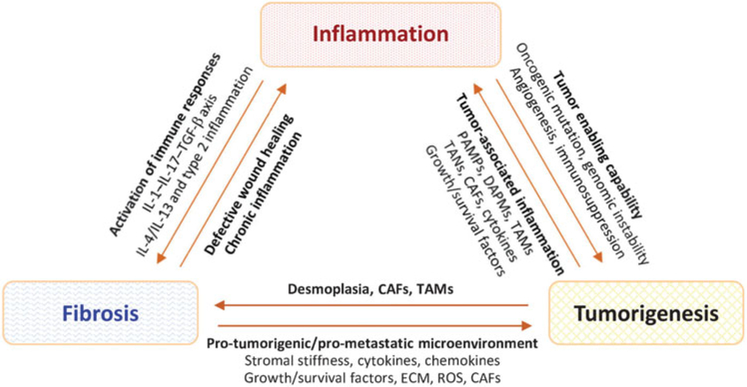Figure 1.
Illustration of interactions among inflammation, fibrosis, and cancer in human disease. Inflammation, fibrosis, and cancer, in summation, underlie a major portion of human disease. Importantly, these pathologic processes cross-interact with each other at multiple levels and by multiple means, which are recognized as the causes for the development of many diseases, as well as the important host factors to influence the effectiveness of drug therapy. The IL-1—IL-17—TGF-β axis is activated by bacterial or viral infection, biliary obstruction, and toxins, such as bleomycin, to stimulate organ fibrosis, whereas the IL-4/IL-13 signaling and type 2 inflammation predominate the fibrotic response to allergen exposure, parasitic infection, and fungal infection. CAF: cancer-associated fibroblast; DAMP: danger-associated molecular pattern; ECM: extracellular matrix; IL: interleukin; PAMP: pathogen-associated molecular pattern; ROS: reactive oxygen species; TAM: tumor-associated macrophage; TAN: tumor-associated neutrophil; TGF: transforming growth factor.

